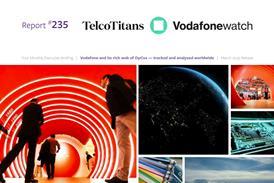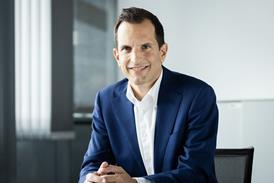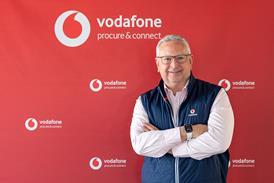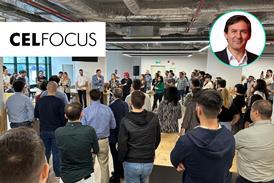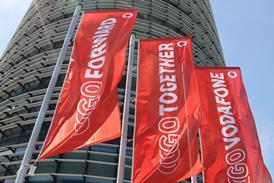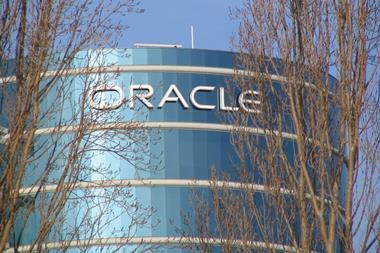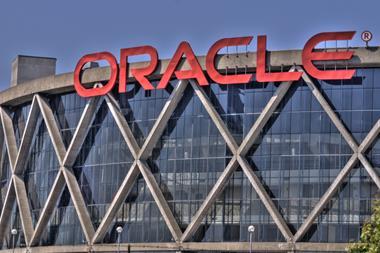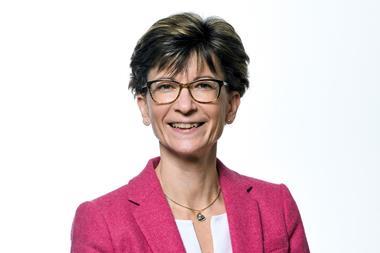- For many years, the telecoms industry has been attempting the balancing act of managing the decline of traditional services while extracting the full value of decades of massive investment in the operational systems that enable them. The challenge of escaping this ‘technology debt’ has now been heightened by a pandemic that has changed, potentially permanently, the nature of network and customer topographies.
- Oracle, which has fully embraced a cloud-native approach to its own services, is confident operators are on the right track with early moves to transition their primary infrastructure. The next step will be the adoption of a mindset encompassing hybrid cloud deployment models that will reimagine the cloud for the demands of fully virtualised network environments.
- Drawing on deep understanding of operators’ businesses and operations, the Oracle team cautions not to apply a cookie cutter approach to the cloud transformation piece. While this can start fast, it then gets derailed by non-negotiable telecoms requirements, such as data sovereignty and latency.
- The read-through for the telecoms industry is the need for an equilibrium that balances the necessity for digital momentum with critical telecoms-specific requirements and maximisation of existing assets, to create an infrastructure and business that is more agile, cost-effective and future-proofed, according to Farooq Hakim, Vice-President for Strategic Accounts at Oracle.


Operators are today simultaneously executing on strategies to build next-generation networks and advance digital service provider ambitions, and often also obliged to switch out high risk vendors. This is requiring maintenance of ‘business as usual’ while building a cloud-enabled future that enables and monetises virtualised networks and operations, 5G, IoT, mobile edge computing, digital platforms, Industry 4.0, new business models, and more.
Speaking to TelcoTitans’ Vendor Voice, senior telco team members at enterprise and telecoms software major Oracle set out a strategy for managing this digital transformation while maintaining critical services still largely reliant on legacy systems. The vendor believes this presents an opportunity for operators to leverage investment, deliver operational and financial benefits through cloudification, and capitalise the cloud at scale.
“This is about achieving the right value-velocity mix — value is generated by applying the right technology to where it is most needed, and velocity is achieved through industry know-how and by having re-usable patterns and integrations. ”
Farooq Hakim.
Pivoting ‘technology debt’ as platform for growth

In addressing the twin challenges of managing legacy and building next-generation services, Hein Van Der Merwe, Global Cloud Technology Account Director at Oracle, talks in terms of embracing consumable IT, provided on a next-generation cloud based platform.
Operators are wrestling with legacy technology investment conundrums, he notes, with “significant technology debt” that has been compounded both in operations and financially. For CFOs, this debt can be material in terms of ongoing costs and balance sheet, but it is also tangible for operations and customers in terms of network, capabilities for solutions that were once (and can still be) best of breed.
Hein considers that adopting a platform approach can help optimise the lifecycle of existing assets and skills, including maximising opportunities for future growth by transitioning the legacy technology estate and capex onto a modern consumption-based model. “This means, as legacy use declines, the costs linked to it come down —the legacy basically disappears rather than being stuck in a corner where you still have to pay for it”, he guides. Meanwhile, development of a compatible platform for new operating models and digital services, equally based on consumption models, harnesses future spend to where the services sitting atop are being enabled and deployed.
“The challenge is to align future platforms, both in terms of delivering leading-edge technology and in terms of addressing the legacy costs, with Vodafone’s technology direction. That’s the only way we see operators getting out of technology debt. With that alignment, we can push history into the future, rather than allowing it to become a hindrance.”
Hein Van Der Merwe.
Hammad Hussain, Business Value Director at Oracle, agrees that, considering the value of capital and skill vested within current operator set-ups, telcos should “evolve the technology they have, rather than simply replace it”.
“Moving to cloud makes sense but replacing everything while doing so can be risky and also requires a big re-/up-skilling program. All this has to be done while managing the skill gap — a big challenge in the industry right now. To move faster and reduce risks is not to replace everything; learn to walk first before running.The key is to take a modernisation approach, i.e. making a business decision rather than just a technology one. This means segmenting the workloads, understanding the value generated by transforming them, and the effort required to do so”
Hammad Hussain.
The hybrid mindset

As part of a move away from traditional monolithic vendor approaches towards more open and ultimately cloud-native systems, operators will need to adopt a different enabling and ownership mindset, says Simon Rogers, Oracle’s Technology and Cloud Director for Vodafone Group. He considers that operators have great inherent strength in securing favourable procurement deals, particularly around commodity components. However, with the cloud, the operational requirements are different, with the economic imperatives subtly changing.
When taking advantage of cloud flexibility, and the utility element that enables you to “turn it on and off” as required, the merits of infrastructure ‘ownership’ diminish. “People want cloud to be a ‘utility’, but, if an operator ‘owns’ all those assets, they can’t take that advantage, so it won’t make sense for them”, he explains.
There is also tension from operators wanting consistent platforms that allow them to exploit the public cloud in some areas, while at the same time maintaining control in others (such as where performance, integration and compliance may be paramount). “Operators need a solution that can tick both boxes”, Simon notes.
Adopting a hybrid model that balances these requirements will require internal cloud capability to be “full, not scaled-back”, according to Simon. To become cloud-native, this is particularly important for critical network functions and when building infrastructure that ultimately transcends virtualisation.
Looking even further ahead, Hammad envisages that, “in five years’ time, we’re going to see hybrid models go beyond traditional definitions of hybrid cloud. It goes into more telecommunications-focused, edge-based definitions of what hybrid looks like, and that’s where latency becomes very, very critical”.
This reimagining of cloud, ownership and control at scale chimes with how Vodafone’s platform-oriented Technology group is strengthening its capabilities, including by adding thousands of software engineers, to deliver on new-generation connectivity and digital service provider ambitions. For Vodafone, this is driven by desire for greater agility, efficiency and differentiation across its internal operations and customer engagement.
Operators always have to consider their future technology configuration’s impact on key stakeholder metrics, and financial efficiency remains tantamount for finance teams, with Simon pointing to EBITDA as a headline indicator that makes “operating expenditure [opex] a swearword”.
While the public cloud is largely opex-based, delivering cloud services internally can prevail on capex (capital expenditure), which could reinforce adoption of a hybrid cloud model as a way to calibrate the funding impact by providing a way of essentially capitalising cloud. This can mean that operators can remove hurdles to modernisation and moving to the cloud by aligning budgets in a way that will not be detrimental to their headline KPIs, explains Simon.
Based on decades of experience across industry and technology solutions, and the delivery and hosting of business- and mission-critical applications, Oracle believes it has created the next generation cloud optimised for running enterprise workloads. This means creating a high-performant, secure, and reliable platform to easily and cost-effectively modernise all types of enterprise workloads. Along with world-class processes and tools, this unlocks tremendous value, reduces risk and delivers best practices with automation and analytics across all deployment models.
For telcos, Oracle offers “truly hybrid” cloud offering, unifying public, dedicated and private cloud capabilities. Pulling no punches, Oracle Cloud Infrastructure (OCI) is positioned as the cloud standout for cost, flexibility and high-performance, with the latter considered honed to the most demanding network cloud requirements, including latency, containerisation, CI/CD, O-RAN and edge computing. As Farooq describes it, “Oracle has offerings that actually build out the cloud infrastructure inside the operator’s data centres and network, so it is like the telco’s own cloud. We supply the same cloud experience and the same cloud infrastructure that is in our public clouds”. Oracle has also spent heavily on automation and autonomous technologies (delivering the first database and operating system to self-operate, self-secure and self-heal), including artificial intelligence and machine learning within its cloud and applications and for customer engagement.
“We want operators to migrate to the cloud and use OCI whether public or dedicated as it has been optimised for Oracle workloads and beyond, hence we believe we’re faster, better, and cheaper. ”
Farooq Hakim.
Getting cloud 2.0 right
Simon considers that Oracle is now delivering “second-generation cloud”, which came about “through learning from all of the things that the first-generation cloud providers did but which they wish they probably hadn’t”.
“Operators are reaching the next stage with the cloud, which means refocusing on current and future demands such as security or time to market, and saying ‘What do we actually need?’. They’re recognising that some existing partnerships are limited and can’t deliver the key performance requirements they need for the future.”
Simon Rogers.
While attention is almost exclusively on ‘cloud’ these days, often public cloud, the majority of enterprise workloads are internal and set to remain that way for some time.

These internal workloads will increasingly need to be cloudified as digitalisation advances, but stakeholders need to be confident this delivers on their key performance requirements, such as latency, data sovereignty, reliability, resilience and security. Reputational risk remains a particular concern regarding entrusting sensitive data and critical workloads to the public cloud.
Oracle sees the answer in a next-generation cloud-native hybrid environment that is architected with sufficient rigour, footprint and capability to reassure stakeholders.
“It is important to note that this isn’t just about performance. Operators are realising that 80% of what they will do with the cloud is moving existing brownfield workloads, and it is not economically feasible to replace or rebuild these workloads. Instead, refactoring is a good fit, and the cloud provider needs to be fully in a position to support the components of existing workloads. What Oracle has done is focus on how all existing workloads can be modernised in the most efficient way. ”
Simon Rogers.
Openness should also be top of mind for operators looking ahead to cloud-native services. Simon notes that data egress is an increasingly important consideration, with “some customers finding that, once they’re on a public cloud, the cost of getting the data out is so significant that it effectively creates a lock-in”.
With this potential for lock-in comes the spectre of bill shock — undermining the efficiency gains that were modelled into the switch to first-generation cloud services. As an example, Simon said that a “massive, massive” factor in web communications company Zoom’s recent decision to adopt the Oracle Cloud over hyperscaler alternatives was data egress expense (as well as high performance). This subtle form of capture can lead to a subconscious gravitation towards a single service or service provider, and ultimately a belief that nothing can be used outside of it, which he says “leads you down a lowest common denominator route”.
Oracle recognises the fundamental requirement to be open when moving towards a cloud-native environment, which can be seen in its cloud architecture and API interoperability, according to Simon. The vendor prides itself on the scale of its engagement with open-source technologies, particularly to ensure they are enterprise-grade, including “delivering these enhanced capabilities back into the open-source arena”.
Another pitfall that could be awaiting operators is that, in migrating from monolithic network equipment provider to disaggregated multi-vendor relationships, they inadvertently transition to system integrator (SI) dependency. Hammad cites estimates that over one-third of O-RAN spend could be directed to SIs. He considers that Oracle provides a safety net: “we think we can help test and pre-integrate O-RAN deployments in the way operators want to, not the way they are being told to by vendors or SIs”.
Oracle and Vodafone
Oracle is well placed as digital service provider enabler, unique in its combination of leadership across full stack enterprise applications, telecoms solutions, and cloud infrastructure. It emphasises differentiation in alignment, considering itself absolutely in lock-step with customer success.
“If you look at the Oracle side: it produces technology for consumption by companies like Vodafone from the lowest level bare-metal compute, which is just a technical component, up to a full retail suite, telecommunication suites and components. That’s our uniqueness.”
Hein Van Der Merwe.
Oracle has a very deep and significant relationship with Vodafone, practically every day in some way supporting everyone (and everything) that comes into touch with the operator. It may lament that Vodafone does “notrealise how much already runs on Oracle platforms”, but this can be interpreted as a backhanded compliment to their resilience. It also reflects the relationship gamut, which extends across cloud, enterprise systems, database, data centre, access management, and more. Oracle is deeply invested in helping Vodafone provide the next generation of services that businesses and consumers are demanding, such as use cases enabled by IoT, 5G and AI/ML. Working with strategic partners including Accenture, Celfocus and Ericsson, Oracle and Vodafone are creating the telco of the future.
“ We touch pretty much every part of operators’ estates and provide critical systems. We see ourselves as a next-generation cloud company and, along with the mix of being one of the world’s largest enterprise application providers, we believe we have key differentiation in having an optimised platform that delivers for enterprises. We are moving operators’ existing environments to the cloud: not just the infrastructure; not just the middleware technology; but also the enterprise application. We provide the telecoms sector with the technology to drive their business; We’re not in there to take over their business but to enhance and future-proof their services. ”
Farooq Hakim.
Recent significant EMEA industry deals include Etisalat, Orange Africa, Telefónica and TIM working with Oracle on at least two of the following three initiatives: serving as host partners for regional data centres; migrating their own on-premises Oracle Database workloads to Oracle Cloud; and selling a range of Oracle Cloud services to new and existing government and business customers. The multi-year deal with Telefónica, for example, will see Oracle deliver a dedicated internal cloud platform for service provision, including BSS and OSS functions. This supports the Spanish group’s goal of creating a shared open platform to enable expansion of its digital services portfolio through internally developed solutions, as well as services co-hosted with partners. In targeting deals such as these, Oracle is building on its established role to transition telco clients to a cloud-native future, and to drive the benefits of cloudification into the infrastructure side where it has also been influential over decades.
Oracle also offers multi-sided partnership, being able and keen to help advance Vodafone’s ambitions in the enterprise, a segment where operator and technology supplier share very strong credentials. Hammad gives the example of cloud, which “presents a mutual opportunity where we can help create a unique cloud for an operator to serve its B2B customers using the same technology”. Oracles’ go-to-market partnerships can encompass blockchain, IoT and security services, as well as industry-specific propositions (connected car, financial, healthcare) and SaaS applications (finance, HR, sales, marketing).
“Telcos are well placed to become cloud service providers. Customers have long trusted them for high levels of service, trust that can now be transposed to providing cloud services considered critical — migration, integration, orchestration, automation and other services such as billing. Oracle has been actively working to create these joint go-to-market opportunities and provide the cloud infrastructure that balances key workloads between cost-efficient, shared public cloud infrastructure and more-sovereign, lower-latency private infrastructure. ”
Hammad Hussain.
Topics
- 5G
- Cloud
- Edge computing (MEC)
- Enterprise (B2B)
- Farooq Hakim
- Hammad Hussain
- Hein Van Der Merwe
- Industry 4.0
- Industry Voice
- Interview
- IoT (Internet of Things, M2M)
- Network & Infrastructure
- Oracle
- Partnerships & Alliances
- Simon Rogers
- Suppliers & SCM
- Technology
- TelcoFutures
- TelcoTitans Industry Content
- Vendor Voice
- Vodafone Group





